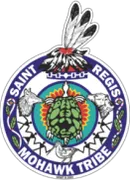-
Community & Family Services
- Care Management Program
- Child Support Enforcement Unit
- Family Support
- HCBS Waiver
- Home Improvement Supplement Program (HIP)
- Homeowner's Assistance Fund
- Individual Residential Alternatives (IRA)
- Individual Supports and Services (ISS) - Housing Subsidy Program
- Office of the Family Advocate
- Three Sisters Program
- Tribal Vocational Rehabilitation (TVR)
- Community Partnership Fund
- Economic Development
- Education
- Environment
- Executive Director's Office
- Finance
- Generations Park
- Grants & Contracts
-
Health Services
- A/CDP Outpatient
- A/CDP Prevention
- Partridge House (Inpatient)
- Ronthahiiohsthá:ke Clubhouse
- Business Office
- Centering Pregnancy
- Dental Clinic
- Health Promotion and Planning
- Laboratory
- Let's Get Healthy - Diabetes Center for Excellence
- Medical Clinic
- Mental Health - Kanikonri:ihne (Good Mind Counseling)
- Outreach Chronic Care Nursing
- Pharmacy
- School-Based Health Center
- Home Improvement Supplement Program (HIP)
- Human Resources
- Office for the Aging
- Office of Emergency Management and Safety
- Planning and Infrastructure
- Social Services Division
- Tribal Historic Preservation Office
- Tribal Police
In Tsiothóhrha/December 1993, the Tribe began to develop its wetland protection program. The first step was the creation of a formal Wetlands Protection Plan, which was completed in 1994. As a result of this plan, the Tribe committed itself to the implementation of a "no net loss - future net gain" policy and to identify an area that would support the establishment of a Mohawk Wetlands Sanctuary.
Tribal wetlands projects face unique hurdles not present for state programs. First, the Tribe exists within a finite land base and must accommodate a growing population. Thus, while the Tribe acknowledges that a key to any successful wetlands program is to minimize wetland impacts, the inevitability of such impacts is apparent when there is simply no alternative site for development. “After-acquired” tribal lands do not automatically become part of the federally recognized Mohawk Territory. Thus, tribal members cannot simply purchase alternative development areas, or mitigation sites that exist off-reservation to avoid wetland impacts.
Secondly, the Wetlands Protection Program relies upon outside funding for its operation. Staff members within the program are responsible for researching and obtaining funds yearly through competitive grant proposals. One key grant agency has been the US Environmental Protection Agency (USEPA), Office of Wetlands, Oceans and Watersheds who has awarded funds yearly since the program’s founding in 1993 and worked over the years in partnership with the Akwesasne Freedom School, Mohawk Council of Akwesasne and the Akwesasne Task Force on the Environment.
Other agencies have also awarded funds to the program for basic operation and research:
US Fish and Wildlife Service - Tribal Landowner Incentive Program and Tribal Wildlife Grant in partnership with local tribal landowners, SUNY Potsdam, NYS DEC Fisheries & Wildlife Division.
Bureau of Indian Affairs - Noxious Weed Eradication Program in partnership with local tribal landowners, Horseshoe Pond/Deer River Flow Association, Cornell University-Natural Resources Dept and the Adirondack Park Invasive Plant Program.
International Joint Commission with partners USGS Tunison Laboratory and the Mohawk Council of Akwesasne.

